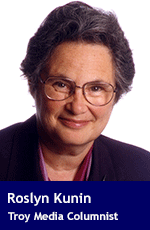The Canadian healthcare system is in crisis. Here is how we can at least solve the doctor shortage
 Our Canadian healthcare system used to be an object of pride. Everyone had access to health care. No payment was needed to access it. Contrast this with the United States, where people died of curable diseases because they could not pay for care.
Our Canadian healthcare system used to be an object of pride. Everyone had access to health care. No payment was needed to access it. Contrast this with the United States, where people died of curable diseases because they could not pay for care.
Unfortunately, Canada now has too many cases of people dying because of a lack of health care. It is not for the lack of money. Health care is still free to patients here. But in some cases, price does not matter.
A woman in a store buying apples asks the grocer why he is selling them at $2 a pound when the store across the street sells them for $1 a pound. When the grocer asks why she did not buy them there, she says they did not have any. Oh, says the grocer, when I don’t have any, the price is 50 cents a pound. It does not matter that health care is free. It is not available to you when you need it.
 |
| Related Stories |
| The alarming reality of Trudeau’s immigration policy
|
| Fixing Canada’s family doctor crisis
|
| Money alone cannot save healthcare
|
We do not have nearly enough healthcare professionals in Canada to meet our needs. The shortage is particularly acute for family doctors who look after many medical issues and are the point of access to other health resources when needed. Millions of Canadians do not have a family physician, and the number is growing as our population increases and retiring doctors are not replaced.
Here are some suggestions for addressing this unfortunate situation. As medicare is government-operated, the responsibility for implementing these suggestions lies with the government itself.
- Increase the supply of doctors
In the short term, we can enable all fully trained doctors currently residing in Canada, who are currently not permitted to provide us with the necessary healthcare. Many of these doctors are Canadians who trained abroad because they could not get into our medical schools. A quick and easy way to do this would be to treat the graduates of high-quality medical schools in English or French-speaking countries as equivalent to Canadian ones.
In the long term, we can expand the capacity for training doctors in Canada, which could take up to 10 years. The saying that “in the long term, we are all dead” applies here, especially to those who are currently ill and in need of care.
- Free doctors of administrative burdens
It is estimated that doctors in Ontario spend 19 hours a week filling out forms and meeting other non-medical requirements. This time commitment could be diminished by eliminating all non-essential tasks, automating processes to the fullest extent possible using technology, including AI, and assigning such responsibilities to non-medical personnel.
- Spread the load
Physicians’ assistants, nurse practitioners, and even nurses can do much of what doctors do. Such people should be readily available in accessible clinics for first-line care. This would not only free doctors’ time to see more patients in serious need but also relieve the burden on emergency rooms that now struggle to deal with far too many non-emergency situations brought by people who have no other medical help available.
- Allow some private medical care
It is a known fact that when the price is set at zero, the demand becomes virtually limitless. Given the impossibility of supplying an infinite amount of medical care, some form of rationing becomes necessary. Currently, we rely on wait lists for this purpose. However, some Canadians expedite their access to care by seeking private healthcare options abroad. Ideally, they should not be compelled to leave the country to pursue such care.
Some private medical care is already available in Canada, especially in Quebec. Ontario is now looking at privatizing some services, such as MRIs. Apart from North Korea, Canada is the only country in the world that does not allow a private medical system to supplement the public system.
- Look after our own health
Looking after ourselves is one way to reduce the need for medical attention, and we don’t have to wait for the government to do it.
During COVID-19, we learned what we have to do to reduce the incidence of contagious illnesses. Get vaccinated. Wash your hands, avoid crowds, wear masks as needed. These measures taken to combat COVID-19 virtually eradicated the flu during the years of the pandemic.
We are all aware of the steps we need to take to lower the risk of various potential health issues. These include increasing physical activity, consuming more vegetables while moderating our intake of other foods, exercising caution with tobacco, alcohol, and recreational drugs, and ensuring we get sufficient rest.
Doing what we can to look after our own health reduces the demand for doctors. It gives governments more time to solve the doctor shortage.
Dr. Roslyn Kunin is a Troy Media columnist, public speaker and consulting economist.
For interview requests, click here.
The opinions expressed by our columnists and contributors are theirs alone and do not inherently or expressly reflect the views of our publication.
© Troy Media
Troy Media is an editorial content provider to media outlets and its own hosted community news outlets across Canada.

